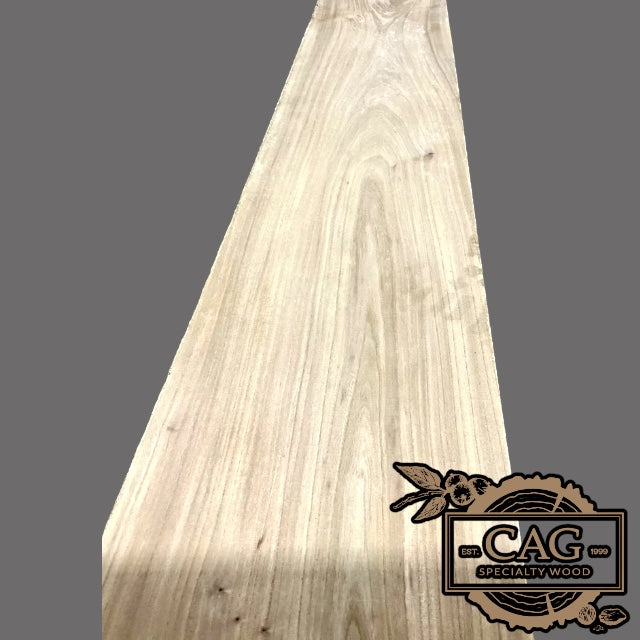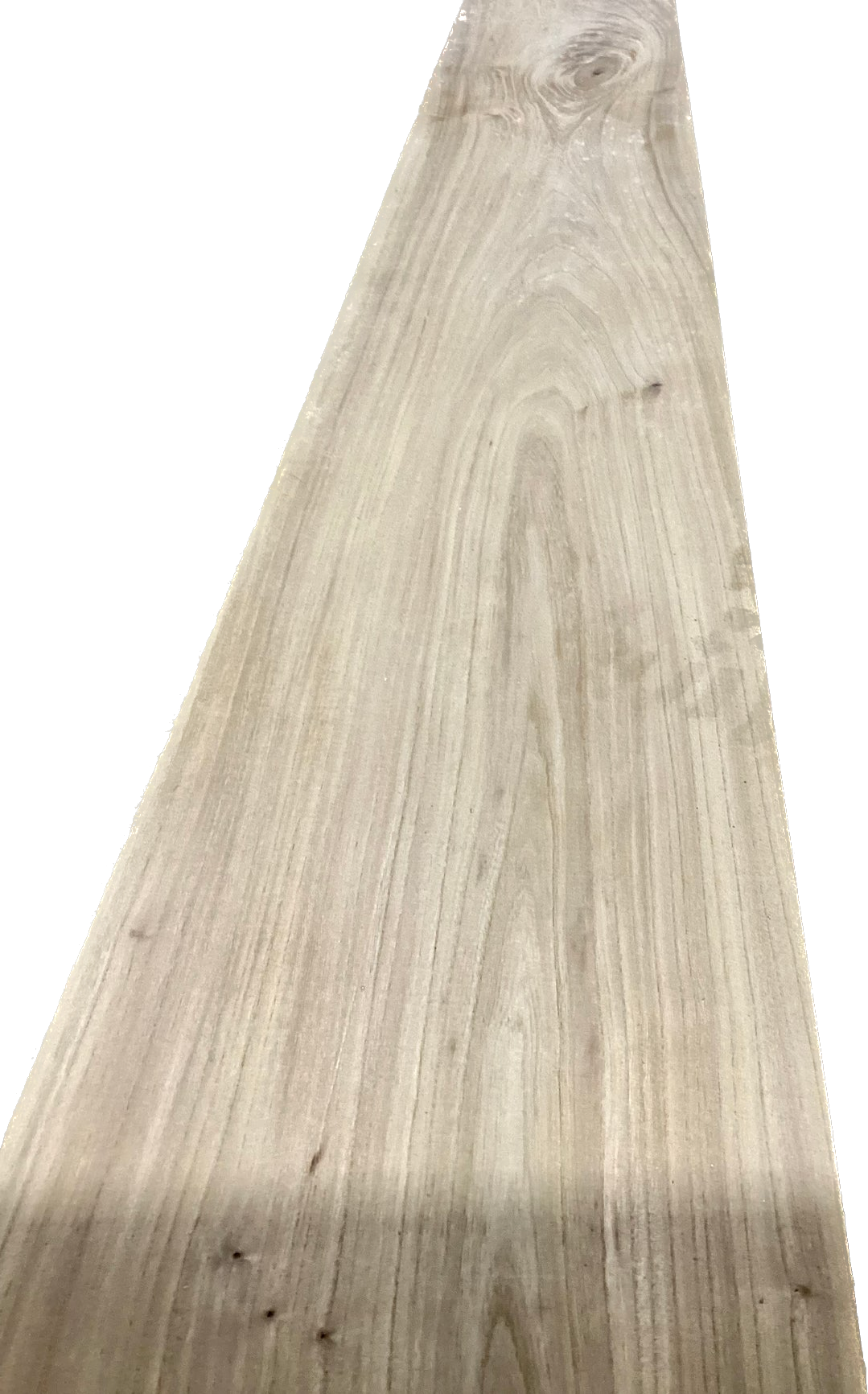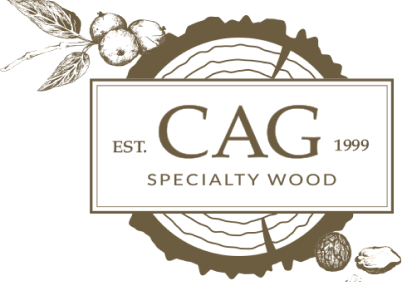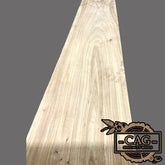

Red Elm 4/4, 8/4
Commo
|
Common Name(s): Red Elm, Slippery Elm, Soft Elm Scientific Name: Ulmus rubra Distribution: Eastern to Midwest United States Tree Size: 50-80 ft (15-24 m) tall, 2-3 ft (.6-1 m) trunk diameter Average Dried Weight: 38 lbs/ft3 (600 kg/m3) Specific Gravity (Basic, 12% MC): .48, .60 Janka Hardness: 860 lbf (3,830 N) Modulus of Rupture: 13,000 lbf/in2 (89.7 MPa) Elastic Modulus: 1,490,000 lbf/in2 (10.28 GPa) Crushing Strength: 6,360 lbf/in2 (43.9 MPa) Shrinkage: Radial: 4.9%, Tangential: 8.9%, Volumetric: 13.8%, T/R Ratio: 1.8 |
Color/Appearance: Heartwood is light to medium reddish brown. Paler sapwood is usually well defined.
Grain/Texture: Grain is interlocked (making it very resistant to splitting). With a somewhat coarse, uneven texture.
Endgrain: Ring-porous; large to very large earlywood pores in a continuous row two to four pores wide, small latewood pores in wavy bands; tyloses occasionally present in earlywood; growth rings distinct; parenchyma vasicentric and confluent; medium rays, spacing normal.
Rot Resistance: Rated as non-durable; susceptible to insect attack. Living trees are susceptible to Dutch elm disease.
Workability: Can be a challenge to work because of interlocked grain, especially on quartersawn surfaces. Planing can cause tearout and/or fuzzy surfaces. Poor dimensional stability. Glues, stains, and finishes well. Responds well to steam bending, and holds nails and screws well.
Odor: Elm usually has a strong, unpleasant smell when green; though once dried has very little odor.
Allergies/Toxicity: Although severe reactions are quite uncommon, Elm in the Ulmus genus has been reported as a sensitizer. Usually most common reactions simply include eye and skin irritation. See the articles Wood Allergies and Toxicity and Wood Dust Safety for more information.
Pricing/Availability: Should be moderately priced, though availability from mature trees has been greatly diminished by Dutch elm disease.
Sustainability: This wood species is not listed in the CITES Appendices or on the IUCN Red List of Threatened Species.
Common Uses: Boxes, baskets, furniture, hockey sticks, veneer, wood pulp, and papermaking.
Comments: More commonly referred to as Slippery Elm in tree form (so named for its gelatinous inner bark), Ulmus rubra is typically called Red Elm in most woodworking applications, in reference to its reddish heartwood.
Elm trees are commonly infected with Dutch elm disease, a fungal disease spread by elm bark beetles. D.E.D. has wiped out millions of Elm trees worldwide.
Name: Red Elm, Slippery Elm, Soft Elm (Ulmus rubra)
Found: Eastern to Midwest United States with a tree size of 50-80 ft tall, 2-3 ft trunk diameter, and an average dried weight of 38 lbs/ft.
Heartwood is light to medium reddish brown. Paler sapwood is usually well defined. Can be a challenge to work because of interlocked grain, especially on quartersawn surfaces. Planing can cause tearout and/or fuzzy surfaces. Poor dimensional stability. Glues, stains, and finishes well. Responds well to steam bending, and holds nails and screws well.
Red Elm 4/4, 8/4
Red Elm 4/4
4050 Old Cornelia Hwy
Gainesville GA 30507
United States
Wood Calculator Section
Need Help Figuring out how much you need ?
One Board foot = 144 Cubic Inches
Example: If you need a piece of wood 12 inches wide, 1 inch thick and 24 inches long, that is equal to 2 board feet.
12 inches x 1 inch x 24 inches = 288 inches. 288/ 144 = 2 board feet


